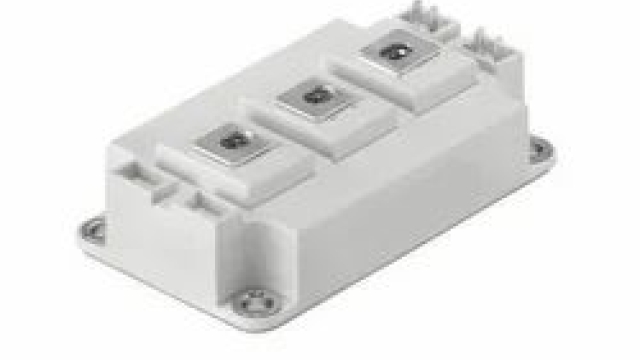
In the realm of power electronics, there exists a marvel that plays a pivotal role in modern technology – the IGBT Module. This innovative device, the Insulated Gate Bipolar Transistor, has transformed the landscape of electrical systems with its efficiency and performance capabilities. The combination of both the voltage control of a MOSFET and the high current capability of a bipolar transistor makes the IGBT module a powerhouse in various applications, from motor drives and renewable energy systems to industrial machinery and electric vehicles. With its ability to handle high power levels and fast switching speeds, the IGBT module is a crucial component in enhancing energy efficiency and reliability in diverse electronic systems.
Working Principle
IGBT modules operate on the principle of combining the voltage control capability of a MOSFET with the high current handling capacity of a bipolar transistor. This unique structure allows for efficient switching of high power levels in a wide range of applications, from motor drives to renewable energy systems. By modulating the voltage across the IGBT, the module controls the flow of current through the device, enabling precise power regulation.
The switching process in an IGBT module involves turning the device on and off rapidly to control the current flow. During operation, when a positive voltage is applied to the gate of the IGBT, it allows current to flow from the collector to the emitter. Conversely, applying a negative voltage to the gate turns off the device by blocking the current flow. This on-off switching mechanism is key to achieving the desired power output and efficiency in various industrial and automotive applications.
One of the key advantages of IGBT modules is their low on-state voltage drop, which minimizes power dissipation and enhances energy efficiency. This makes IGBT modules ideal for high-power applications that require both high voltage blocking capability and low conduction losses. The ability of IGBT modules to handle large currents and high voltages with minimal losses has made them indispensable in modern power electronics and motor control systems.
Advantages
Firstly, IGBT modules offer high efficiency in power conversion, making them ideal for applications requiring energy conservation and reduced heat dissipation. This efficiency results in lower energy costs and longer lifespan of the overall system.
Secondly, IGBT modules provide excellent switching capabilities, allowing for precise control over the power flow. This enables smooth operation and minimizes power loss during switching transitions, enhancing the reliability and performance of the system.
Additionally, IGBT modules offer compact designs and modular configurations, making them easy to integrate into various industrial and commercial applications. Their flexibility in voltage and current ratings further adds to their versatility in addressing diverse power requirements.
Applications
IGBT modules are widely utilized in various industries for their superior performance and efficiency. One key application is in renewable energy systems, where IGBT modules play a crucial role in converting DC power from solar panels or wind turbines into usable AC power for homes and businesses.
IGBT Module
Another significant application of IGBT modules is in electric vehicles, where they are essential components in the power electronics systems that control the motor drive and battery charging functions. The high power handling capabilities of IGBT modules make them ideal for providing the necessary propulsion for electric vehicles while ensuring optimal energy usage.
IGBT modules are also extensively used in industrial motor drives, where precise control over motor speed and torque is required. Industries such as manufacturing, robotics, and automation rely on IGBT modules to achieve efficient and reliable operation of their machinery, contributing to increased productivity and reduced energy consumption.
